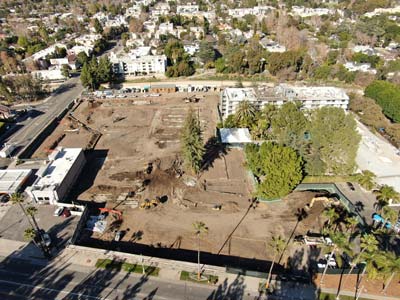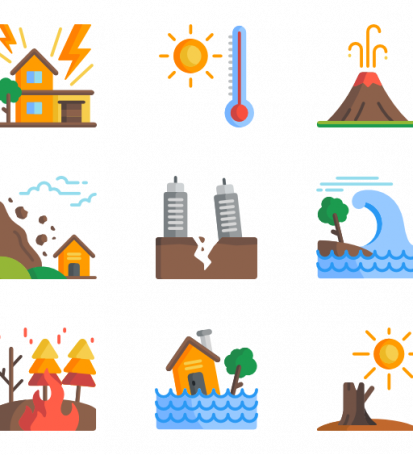In 2019 the proliferation of drones continued. By the year 2022 the Federal Aviation Authority (FAA) predicts almost three million small drones will be flying in American skies, of which 15% will be used for commercial purposes. PwC estimates drone usage in commerce could be worth $6.8bn Insurance companies are a field where drone use has the potential to cut costs and provide a greater service to clients.

The above image shows the quality of imagery available from a high-quality drone. Viewing the budget of an insurance company, the potential to upgrade drones to include infrared, LIDAR and even moisture detection sensors are vast.
How Insurance Companies Are Using Drone Services
Insurance work is inherently tied to scenes of destruction. Whether it is rain damage, floods, fires, earthquakes or hurricanes, access to these sites can be dangerous and painstakingly slow. As the climate crisis deepens and the risk of severe natural disasters increases, fast responses from insurance companies are essential.
Drones are perfect for assessing rooftops and other dangerous or hard to reach places. With improved maneuverability, drones can enter buildings deemed unsafe. The cross-over with search and rescue was evident. Drones provide a way to gather diverse and new forms of data; aerial images and footage no longer require a costly helicopter. The quality of aerial data gathered using drones, now capable of 4K footage, far surpasses that of a blurry satellite image.
Beyond 2D images, drones can use LIDAR and other 3D imaging techniques to provide 3D models for insurance companies. We’ve seen how these scanning techniques have been used in the Middle East to re-construct precious cultural artifacts vandalized during the war.
Infrared cameras mean drones can spot an air or water leak easily, far more easily than an adjuster working with traditional methods. No more ladders, no more climbing onto roofs or renting a cherry picker to peak at the higher reaches of a multi-level structure.

Drones and Natural Disasters
Protecting our food security and our farmers from natural disasters means having solid insurance for when things go wrong. They say humanity is three meals away from chaos, and with drones we can ensure more farms more quickly and with greater accuracy than traditional inspection processes alone. Drones can cover 500 to 1000 acres in under a day.
The efficiencies work both ways, with lower overheads reducing costs for buyers and more accurate data for insurance companies to work within making their quotes. No more guesswork and estimates, drones, and computer vision can tell you exactly how many crops are present, minimizing fraud, but these technologies can quickly cover areas affected by natural disasters.
When it comes to making claims drones provide accurate and reliable evidence that can be gathered quickly and on short notice. Reacting at speed with a drone to assist in collecting data means more sites within an affected disaster zone can be covered by smaller teams of inspectors.
Other large scale assets are skyscrapers and tall buildings. Many cities and their structures are at risk of more powerful storms and flooding due to the climate crisis. Drones can give far more detailed data regarding the status of these buildings over time than a manual inspection ever could. Shorter inspection times allow for more frequent inspections, adding the potential for improved monitoring of issues to catch any before they grow out of control.
How will drones affect employment in the insurance industry?
With the climate crisis brewing, the potential for natural disasters to affect rural and urban areas is growing rapidly. Drones and the network of software development and analysis required to maximize their effectiveness are a prime innovation.
Automation is considered a big threat to workers, and when we think about drones and their efficiencies it seems like the next logical step is automation. Laird Rixford, the CEO of Insurance Technologies, told Insurance Business Magazine that the impact of drones on the insurance workforce would not be a reduction, but a change in some.
“You still need underwriters to analyze and process data, you still need someone to physically visit the property and operate the drone.” Insurance Business
Using drones effectively in an insurance company doesn’t have to mean laying off staff. In fact, staff gets the opportunity to expand their skill set by learning to fly a drone or to analyze new data. Of course, specialist pilots may be necessary for more taxing investigations.
In the United States, drone pilots must be certified by the FAA. Drones must be registered too.
However, in the United Kingdom under the Civil Aviation Authority (CAA) no license is required, although permission is needed to fly within certain areas.
What is the future of drone use in insurance?
Automation is coming to the drone industry and the ideal many are pushing for is being able to fly drones out of their line of sight. This is similar to how we conceive of military drones. Wherein pilots are thousands of miles away from the drone itself, using a games console controller to fly the drone. This centralization of drone technology would be welcomed by many in the insurance industry, especially when covering claims related to natural disasters, but for now, the gains of a simple drone in collecting data for insurance underwriting are huge.
In relation to drone development in the insurance industry, data analysis is developing too. New data collection methods, beyond imagery, and into modeling and measurements, means new skills and new jobs are being created through this innovative technology.



